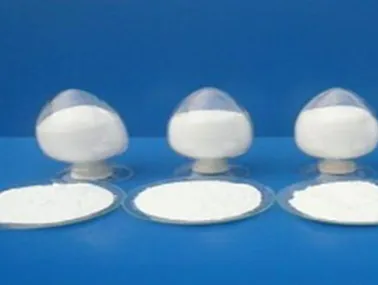
clouding agent for beverages
The Rise of Clouding Agents in Beverage Production
In today’s competitive beverage market, aesthetic appeal plays a pivotal role in attracting consumers. An essential element of this visual appeal is the cloudiness or turbidity of drinks, particularly in products like juices and alcoholic beverages. This is where clouding agents come into play. These substances not only enhance the appearance but can also influence mouthfeel and overall taste perception.
What Are Clouding Agents?
Clouding agents are substances added to beverages to create a visually appealing appearance by increasing turbidity. Typically, these agents can be derived from natural sources, such as pectin from fruits, or synthetic alternatives. They are designed to mimic the natural cloudiness found in freshly squeezed juices or unfiltered beverages, which consumers often associate with freshness and quality.
Importance of Clouding Agents
1. Visual Appeal Consumer preferences lean towards beverages that look fresh and enticing. A cloudy appearance in juices, for example, suggests that the drink retains more of the natural fruit components and is therefore considered healthier and more natural.
2. Textural Experience Clouding agents also contribute to the mouthfeel of beverages. The texture can elevate the drinking experience, making it smoother and more luscious. Different clouding agents can create varying levels of viscosity, enhancing the overall sensory profile of the drink.
3. Flavor Perception Interestingly, the visual appeal provided by clouding can also enhance flavor perception. Studies have shown that people often perceive cloudy beverages as tastier, as the visual cues can trick the brain into believing that a drink is more flavorful than its clear counterparts.
4. Shelf Stability Clouding agents can help stabilize emulsions in beverages that contain oils or other ingredients that may separate over time. This stability ensures a consistent product, maintaining both appearance and taste throughout the product's shelf life.
Types of Clouding Agents
clouding agent for beverages

1. Natural Clouding Agents These include pectin, gum arabic, and other polysaccharides that are derived from plants. They are preferred by many manufacturers seeking to market their products as 'natural' or 'organic.' Pectin, for example, is commonly used in fruit juices and smoothies to create a thick, luscious appearance without artificial additives.
2. Synthetic Clouding Agents These are often made from chemically modified substances that can produce a more predictable and consistent turbidity compared to their natural counterparts. While they may be more effective in some contexts, they are less favored by consumers seeking clean-label ingredients.
3. Microbial and Food Protein-Based Agents Some innovative approaches involve using proteins to achieve cloudiness. These agents can provide unique properties and may be used in specific products, such as non-dairy beverages or specialty craft beers.
Regulatory Considerations
The use of clouding agents is regulated by food safety authorities in many countries. For instance, the FDA (Food and Drug Administration) in the United States and EFSA (European Food Safety Authority) in Europe set stringent guidelines on what can be used in food and beverage production. Labeling transparency has become increasingly critical, and consumers today prefer products with clear, understandable ingredient lists. This trend pushes beverage manufacturers to choose clouding agents wisely, ensuring compliance with regulations while meeting consumer expectations.
Future Trends
As the beverage industry continues to evolve, several trends are emerging regarding clouding agents. There is a growing consumer preference for transparency in ingredients, which encourages the development of innovative, natural clouding agents. Furthermore, sustainability is becoming a key focus, prompting manufacturers to explore bio-based and eco-friendly options.
The advancement of technology in food sciences also opens up new possibilities for creating effective clouding agents that align with health-conscious trends, such as low-sugar or functional beverages infused with vitamins and minerals.
Conclusion
Clouding agents represent a fascinating intersection of science, art, and consumer preference in the beverage industry. They not only enhance the visual appeal of drinks but also play essential roles in textural experience, flavor perception, and product stability. As consumer demands evolve, so too will the methods and materials used to achieve the cloudy allure that captivates the eyes and palates of consumers worldwide. The future of beverage production looks promising, driven by innovation and a deep understanding of consumer preferences.
-
Understanding Synthetic Rubber OptionsNewsApr.27,2025
-
Trichloroisocyanuric Acid: Essential for Clean and Safe WaterNewsApr.27,2025
-
Sodium Dichloroisocyanurate: Key to Safe Water TreatmentNewsApr.27,2025
-
Sodium Acid Pyrophosphate: Essential in Modern Food ProcessingNewsApr.27,2025
-
Essential Water Treatment ChemicalsNewsApr.27,2025
-
Denatured Alcohol and Its Industrial UsesNewsApr.27,2025
-
The Versatile Uses of Sodium BicarbonateNewsApr.24,2025
Hebei Tenger Chemical Technology Co., Ltd. focuses on the chemical industry and is committed to the export service of chemical raw materials.
-

view more DiethanolisopropanolamineIn the ever-growing field of chemical solutions, diethanolisopropanolamine (DEIPA) stands out as a versatile and important compound. Due to its unique chemical structure and properties, DEIPA is of interest to various industries including construction, personal care, and agriculture. -

view more TriisopropanolamineTriisopropanolamine (TIPA) alkanol amine substance, is a kind of alcohol amine compound with amino and alcohol hydroxyl, and because of its molecules contains both amino and hydroxyl. -

view more Tetramethyl Thiuram DisulfideTetramethyl thiuram disulfide, also known as TMTD, is a white to light-yellow powder with a distinct sulfur-like odor. It is soluble in organic solvents such as benzene, acetone, and ethyl acetate, making it highly versatile for use in different formulations. TMTD is known for its excellent vulcanization acceleration properties, which makes it a key ingredient in the production of rubber products. Additionally, it acts as an effective fungicide and bactericide, making it valuable in agricultural applications. Its high purity and stability ensure consistent performance, making it a preferred choice for manufacturers across various industries.











